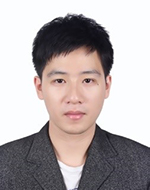The University of Michigan – Shanghai Jiao Tong University Joint Institute (UM-SJTU JI, JI hereafter) Associate Professor Jaehyung Ju and his collaborator have published a research article titled “Inverse design of 3D reconfigurable curvilinear modular origami structures using geometric and topological reconstructions” in Nature Communications, a top-tier multidisciplinary journal of natural sciences. The article provides a design framework for reconfigurable mechanical metamaterials with target multiple mobilities within an arbitrary 3D curved shape, disrupting traditional periodic 3D metamaterial design using constant shape and reconfigurability.
The advancement of manufacturing techniques across a wide range of length scales enables mechanical metamaterials whose physical properties are governed by rationally designed geometry and topology rather than a chemical composition. Researchers are pushing the limit of design for reconfigurability, which allows metamaterials to change their shapes from one state to another, tuning their physical properties in adapted and active (even intelligent) ways to varying physical environments. Origami and kirigami structures, the ancient art of paper folding and cutting, provide an ideal platform to construct such metamaterials due to their great reconfigurability and vast design space. However, most existing methods require unit cells of such metamaterials to be spatial-periodic, implying a critical limitation when constructing practical engineering and artistic structures, the shapes of which are primarily curvilinear (e.g., automotive and aerospace structures with various curvatures). Such networks require that the size and shape of the building block no longer be homogeneous in the design domain.

Figure 1. Geometric reconstruction of nonperiodic modular origami structures: (a) Unit cell with polyhedrons, (b) target shape, and (c) template with deformed polyhedrons. (d) Volumetric shrinkage; the shrunken polyhedrons are highlighted in purple. (e) Extrusion of prismatic tubes to connect adjacent shrunken polyhedrons. (f)–(j) Other examples of the geometric reconstruction for synthesizing 3D architected materials with modular origami. The rightmost column shows the 3D-printed prototypes.

Figure 2. Procedure to produce reconfigurability through topological reconstruction.
The research team led by Jaehyung Ju explores an inverse design framework for 3D reconfigurable architected origami materials. Using volumetric mapping and shrinkage (see Figure 1), the research team proposed a method producing spatially gradient cells fitting complex curvilinear 3D geometries, followed by geometric and topological reconstruction of modules to tailor mobility (Figure 2 ). Without tessellating unit cells with constant shape and reconfigurability, this work opens a new path toward 3D reconfigurable systems.
Jaehyung Ju and Associate Professor Xiang Zhou from the School of Aeronautics and Astronautics of SJTU are the corresponding authors of the paper which is first-authored by JI doctoral student Kai Xiao. Co-authors of the article also include JI master graduate student Zihe Liang and JI doctoral student Bihui Zou. The research work was funded by the Shanghai Natural Science Foundation, the National Natural Science Foundation of China, and the Research Incentive Program of Recruited Non-Chinese Foreign Faculty by Shanghai Jiao Tong University.
Personal Profile

Jaehyung “Joshua” Ju is an associate professor of the UM-SJTU Joint Institute, Shanghai Jiao Tong University. He received his Ph.D. degree from Texas A&M University in 2005. Prior to joining JI in 2016, he worked as a postdoctoral research associate in Texas A&M University and Clemson University, and an assistant professor in University of North Texas. Jaehyung Ju received Jason Daida Teaching Excellence Award in 2019. His research interests include mechanical metamaterials, 4D printing and nonpneumatic tires. He has published papers in top-tier journals, e.g., Nature Communications, Advanced Materials, Advanced Functional Materials and Journal of the Mechanics and Physics of Solids.

Kai Xiao is a direct Ph.D. student of the UM-SJTU Joint Institute enrolled in 2018. His research focused on the computational design, numerical simulation and experiments of flexible mechanical metamaterials under supervision of Professor Jaehyung Ju. He received SJTU Graduate Student Excellence Scholarship. He was a lab consultant of mechanical-engineering-experimental courses VM395 and VM495 of the Joint Institute.





